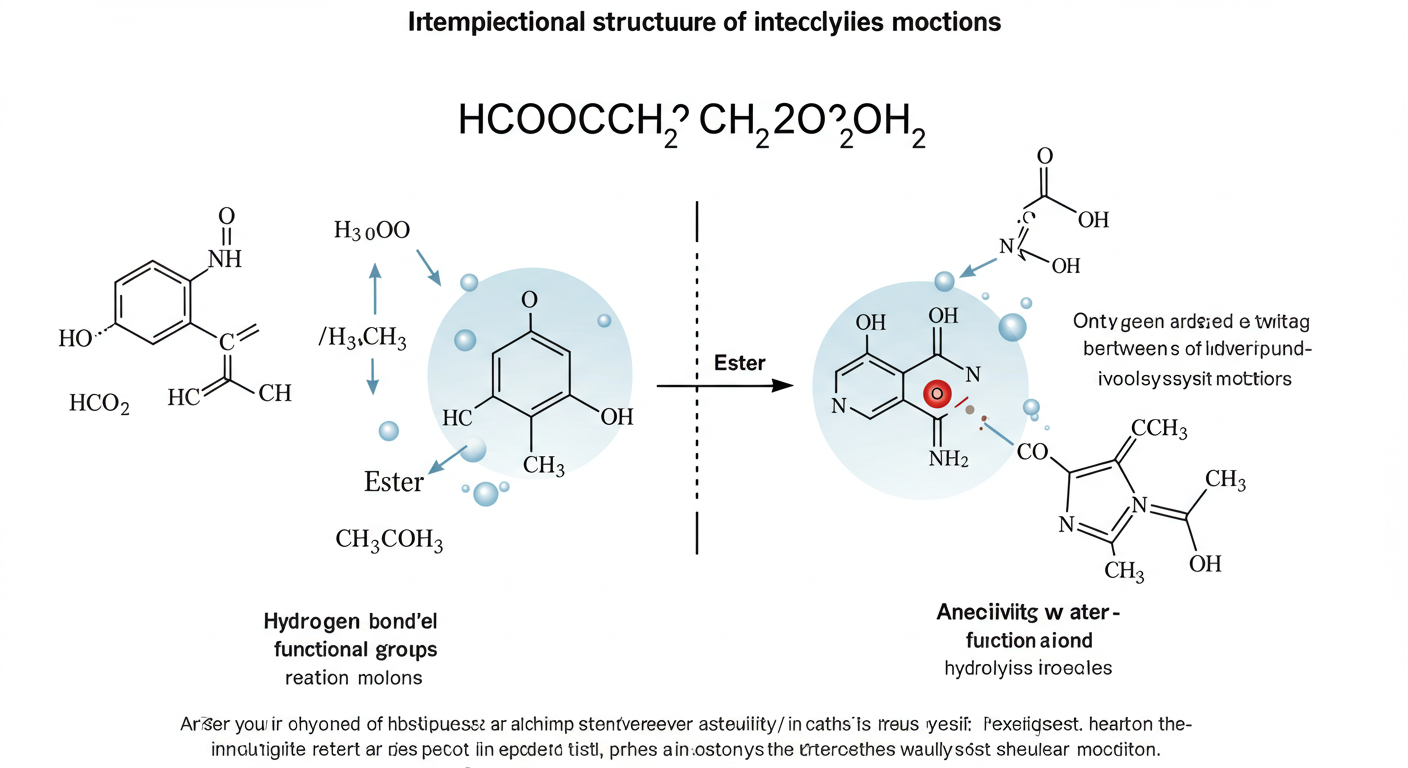hcooch ch2 h2o might sound like a complex chemical formula, but it holds fascinating secrets about how substances interact in aqueous environments. Understanding this compound opens the door to insights that can impact various fields, from chemistry to environmental science. Water is often called the universal solvent for good reason—it plays a crucial role in dissolving and reacting with countless compounds. So, what makes HCOOCH2H2O special? Let’s dive deeper into its structure, properties, and how it interacts with water molecules to uncover its significance in solubility and reactivity!
Chemical Structure and Properties
The chemical structure of HCOOCH2H2O reveals a fascinating arrangement. This compound features a formate group attached to a methylene unit and an alcohol functional group. Its formula showcases the interplay between carbon, hydrogen, and oxygen atoms.
Due to its unique configuration, HCOOCH2H2O exhibits distinct properties. It has moderate polarity, allowing it to interact effectively with water molecules. This characteristic enhances its solubility in aqueous solutions.
Additionally, the presence of both hydrophilic and hydrophobic components contributes to its versatility in various applications. The molecular interactions influenced by this balance can affect behavior when mixed with other substances.
Understanding these structural nuances is crucial for researchers exploring potential uses in fields ranging from pharmaceuticals to environmental science. Each aspect plays a role in how HCOOCH2H2O behaves both alone and within complex mixtures.
Interactions with Water Molecules
HCOOCH2H2O exhibits intriguing interactions with water molecules, significantly influencing its behavior in aqueous environments. Its molecular structure allows for hydrogen bonding, which enhances solubility.
When mixed with water, the polar nature of HCOOCH2H2O facilitates strong attractions between its functional groups and water molecules. This affinity promotes a dynamic interplay that can alter the physical properties of both substances.
These interactions are crucial in biochemical processes. They assist in transporting nutrients and waste products across cell membranes. Additionally, they contribute to the stability of various compounds dissolved in solutions.
The ability to interact effectively with water also hints at potential applications in pharmaceuticals and biochemistry. Understanding these dynamics opens doors to innovative uses that leverage this unique solubility trait without compromising structural integrity.
Effects on Solubility of Other Compounds
HCOOCH2H2O significantly influences the solubility of various compounds. Its unique structure allows it to interact with both polar and non-polar substances effectively.
When introduced into a solution, HCOOCH2H2O can enhance the solubility of organic compounds that typically resist dissolving in water. This is due to its ability to form hydrogen bonds, which aids in breaking down molecular structures.
Moreover, HCOOCH2H2O acts as a mediator in ion-dipole interactions. This property facilitates the dissolution process for ionic compounds by stabilizing ions as they disperse within water.
These effects make HCOOCH2H2O an interesting component for applications requiring increased solubility. The compound could potentially transform how formulations are developed across various industries, from pharmaceuticals to food science.
Reactivity of HCOOCH2H2O in Water Solutions
HCOOCH2H2O exhibits intriguing reactivity when dissolved in water. Its unique structure allows it to participate in various chemical reactions that can significantly influence its behavior.
When mixed with water, HCOOCH2H2O can undergo hydrolysis, leading to the formation of formic acid and other byproducts. This reaction is essential for understanding its potential applications.
The presence of functional groups makes this compound reactive under specific conditions. Factors like temperature and pH can further modify its reactivity profile, offering a range of possibilities for chemists exploring new syntheses.
Moreover, HCOOCH2H2O may interact with ions present in aqueous solutions. Such interactions can alter both the stability and solubility of the compound, affecting how it behaves in different environments.
Understanding these aspects helps researchers predict outcomes in biological systems or industrial processes where this molecule might be used.
Potential Applications and Uses
HCOOCH2H2O demonstrates versatility in various fields. Its chemical properties make it a candidate for use as an intermediate in organic synthesis. This can lead to the development of new pharmaceuticals and agrochemicals.
In industrial applications, HCOOCH2H2O serves as a solvent or reagent. Its ability to dissolve polar substances enhances its value in chemical processes.
Moreover, researchers are exploring its role in biochemical systems. It might influence enzyme activities or cellular interactions due to its unique structure.
Environmental science also benefits from this compound’s properties. It could aid in bioremediation efforts by enhancing solubility and reactivity of contaminants.
These potential applications highlight HCOOCH2H2O’s significance across diverse scientific domains, paving the way for innovative solutions and advancements.
Conclusion:
The exploration of HCOOCH2H2O reveals fascinating insights into its behavior in aqueous environments. Understanding its solubility and reactivity opens doors to innovative applications across various fields.
From pharmaceuticals to industrial processes, this compound plays a critical role. Its unique properties can enhance the performance of other substances when mixed with water.
Research continues to uncover more about HCOOCH2H2O’s potential. Scientists are excited about what future studies might unveil regarding its interactions and benefits.
As we delve deeper, the implications for science and industry become increasingly significant. Keeping an eye on developments surrounding this intriguing compound can lead to breakthroughs that influence multiple sectors.
FAQs:
What is HCOOCH2H2O?
HCOOCH2H2O, also known as formic acid methanol hydrate, is a chemical compound formed from the interaction between formic acid and methanol in an aqueous environment. Its unique structure allows it to play various roles in chemistry.
How does HCOOCH2H2O interact with water?
The interactions of HCOOCH2H2O with water molecules are complex. The hydroxyl group (–OH) forms hydrogen bonds with water, enhancing its solubility in aquatic environments and influencing various chemical reactions.
What effects does HCOOCH2H2O have on the solubility of other compounds?
This compound can increase the solubility of certain polar substances while affecting others differently based on their specific properties. By modulating solvent properties, it creates potential for applications across diverse fields.
Is HCOOCH2H2O reactive in aqueous solutions?
Yes, HCOOCH2H2O exhibits reactivity when dissolved in water. Its ability to participate in acid-base reactions makes it valuable for organic synthesis and biochemistry research.
What are some practical applications of HCOOCH2H2O?
There are several potential uses for this compound. It can be utilized as a solvent or reagent in laboratory settings, agricultural applications, and even within pharmaceuticals due to its unique properties that facilitate chemical processes.
If you have more questions about hcooch ch₂ h₂o or related topics, feel free to reach out! Understanding these concepts opens new avenues for exploration and innovation.







Leave a Reply